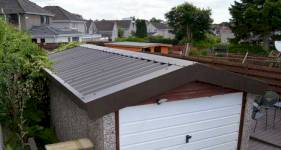New Window Opening Cost
Are you looking to have a new window opening added to your home?
Well, in this guide we cover what the overall costs will include and what you can expect the job to involve.
If you're looking for a builder, we can help you. Why not request a quote from our available builders?
So, read below to find out everything you need to know about constructing a new window opening.
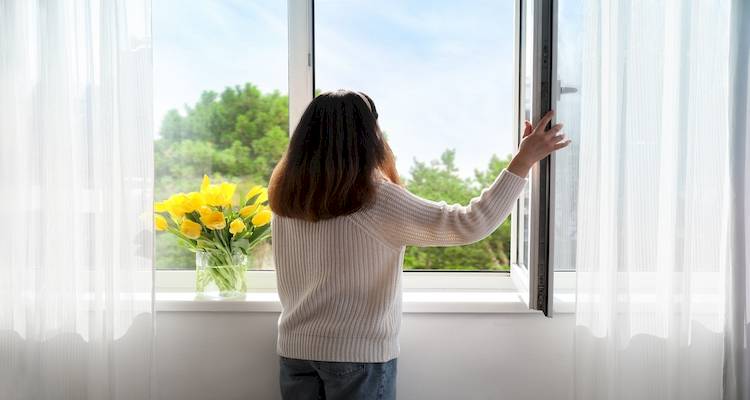
£500
Table of Contents
- How Much Does Installing A New Window Opening Cost?
- Supply Only Costs
- Additional Costs
- Labour Costs and Timescales
- Cost Factors of Installing a New Open Window
- What's Involved in Installing a New Window Opening?
- Can I Install a New Window Opening Myself?
- Building Regulations & Planning Permission for Installing A New Window Opening
- Types of New Window Openings
- Hiring Contractors for Installing a New Window Opening Checklist
- FAQs
- Sources
How Much Does Installing A New Window Opening Cost?
Have you recently purchased an old house with windows that need to be replaced, or are you looking to upgrade your home's windows? Buying new windows for your house is a challenge in any case.
They are, by definition, an investment, and many factors, such as style and material, influence the cost of your new windows. This makes it challenging to find the best windows at the best price.
However, investing in good windows pays off in the long run. High-performance windows can improve your property's energy efficiency and rise in value, making it more appealing to potential buyers.
So, what is the cost to create a new window opening?
The cost of replacing a window is based on the size and style of the window. For example, a small, double-glazed casement window, such as one found in a restroom or utility room, can cost as little as £200 to substitute, whereas more oversized windows, such as those found in living rooms or bedrooms, can cost between £400 and £600.
If you want wooden-framed windows rather than uPVC, the cost will be higher, usually at least double the price, and prices can skyrocket if you use fewer common woods - individual windows can cost thousands of pounds.
It will always be challenging to calculate the cost of windows for various-sized properties, mainly because each supplier has its price list. Furthermore, the glass is frequently priced separately to allow us to select triple or double glazing. Manufacturers and suppliers also offer discounts as incentives to purchase more.
New Window Opening Prices
Take a look at the table below for the new window opening installation cost:
| Window Size | uPVC | Aluminium | Timber | Composite |
|---|---|---|---|---|
| 600 x 900 mm | £150 - £350 | £500 - £600 | £800 - £950 | £1,200 - £1,800 |
| 900 x 1200 mm | £400 - £550 | £650 - £800 | £1,200 - £1,300 | £1,800 - £26,000 |
| 1200 x 1200 mm | £650 - £800 | £750 - £1,000 | £1,350 - £1,500 | £2,600 - £3,000 |
Supply Only Costs
The supply you choose for your windows will significantly impact the price. We've compiled some average prices for the supply of windows by material to give you an idea of the price difference you're looking at.
Tilt and Turn
Single-opening Tilt-and-Turn window prices in the UK range from £250 to £350 for 1.2mx1.2m frames, supply only. A double-opening window of the size costs £320 - £425 instead, with larger sizes costing more.
Many modern designs are available for uPVC Tilt-and-Turn windows. Some manufacturers will even make them match your existing home decor. However, even though these colours are available, many experts recommend standard white uPVC or one of the many woodgrain effect prints.
Modern windows, however, do more than just look good. They also come standard with high-end security locks, with additional options for more diverse security solutions. Furthermore, you can choose between triple and double-glazed Tilt-and-Turn windows to help you save money on energy.
Aluminium Window Costs
Aluminium frames are more costly than uPVC frames, but they will provide your home with long-lasting, durable, and aesthetically pleasing windows. They have a higher thermal efficiency than uPVC, slimmer frames, and require less maintenance than wood. Aluminium frames can be supplied in various colours to match the sense of style of your home.
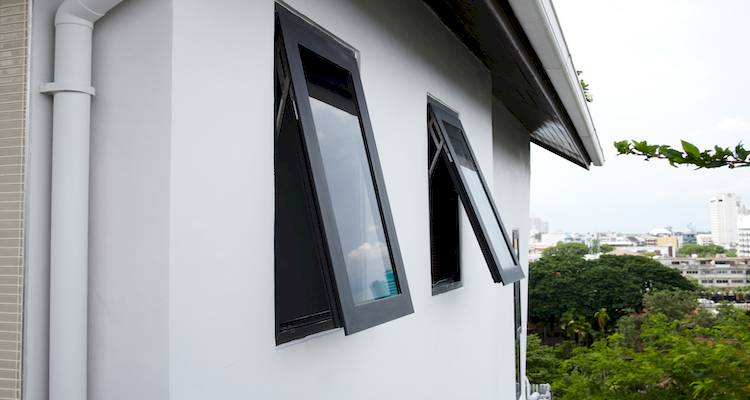
A 600 x 900 window would cost £450 - £600, 900 x 1200 would cost £600 - £700, and a 1200 x 1200 would cost £700 - £800.
Timber Window Costs
Timber frames are the most expensive option, but they can add significant value to your home, especially if you are concerned with overall aesthetics. They provide a beautiful and elegant finish and are ideal if your home is from a specific era. Timber frames are available in various hardwood and softwood species and finishes.
It's important to remember that they also necessitate constant maintenance than uPVC or aluminium, in addition to being more expensive. Timber windows cost £750 - £900 for 600 x 900, a 900 x 1200 will cost £1,000 - £1,200 and 1200 x 1200 will cost £1250 - £1400.
Composite Windows
Composite windows are typically at the higher end of the price spectrum. Timber is an expensive material, and the additional aluminium cladding raises the price even more.
The cost of installing double-glazed composite windows through a house could range between £10,000 and £15,000. As you might expect, the cost of triple glazing will rise by about 25%.
Additional Costs
Consider having additional work done when installing new window openings to give your home a completely new look! Alternatively, minor details can add up to a high cost in some cases. As a result, we'll go over the additional costs of installing new window openings in this section so you know what to expect.
New Front Door
Your front door gives visitors and passers-by their first impression of your home. This is also the first thing you notice when you get home. If your current front door isn't looking its best, it's a good idea to replace it.
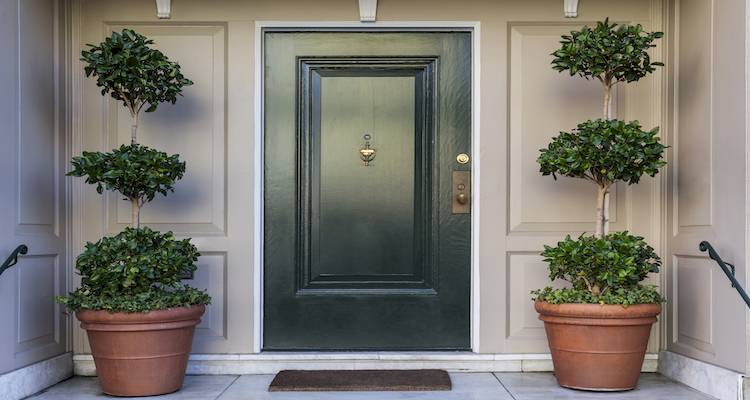
The cost of replacing a front door in the UK varies greatly depending on the type of door being installed, your location within the UK, and the project's complexity. However, a standard front door should cost between £500 and £2500, while a custom-made door should cost between £2000 and £4500.
If your front door looks a little grimy or faded, it may not be necessary to replace it entirely.
If you would like further information, please refer to our guide on the costs of installing a new front door.
Paint a House
In the UK, the average cost of painting a two-story, three-bedroom house is around £850. However, keep in mind that this is only an estimate, and many cost-variable factors will affect the final cost of your project.
These factors include the size of your home, its design, the materials used, and the tradesperson's daily or hourly rates.
When you hire an expert painter and decorator to paint the exterior of your home, you usually pay for all materials, supplies, and labour. In most cases, you will need to erect scaffolding before having the exterior of your home painted.
If you would like further information, please refer to our guide on the costs of painting the exterior of a house.
Resealing Windows and Doors
When windows and doors are not sealed properly, cold air can enter the property, and your home can escape. In the long run, this results in higher energy costs. Regularly resealing your windows and doors is an excellent way to reduce your long-term costs.
The estimated cost of resealing your windows and doors is determined primarily by the number of windows and doors being resealed. The materials are relatively inexpensive (around £5 - £10), so you won't be breaking the bank just on materials.
The cost of resealing double-glazed windows, single-glazed windows, and doors will typically range between £25 and £70 per window or door.
If you would like further information, please refer to our guide on the costs of resealing windows and doors.
Painting Exterior Doors
The cost of painting an exterior door depends on the door's size, type, and material and how many layers of paint and primer are required.
Typically, painting an exterior door without additional work can cost around £150. However, painting an exterior door with glass panels that require knotting and sanding can cost £250 per door.
Depending on the type of door, size, number of coats required, and material, an exterior door paint job can take anywhere between 2 - 4 hours. In addition, you might be looking to replace the previous paint job, necessitating sanding.
If you want a low-cost option, you can do it yourself. However, if you want the job done correctly, it's always in your best interest to find a qualified painter and decorator.
If you would like further information, please refer to our guide on the costs of painting exterior doors.
Rendering
Rendering your home can cost anywhere between £2,000 and £8,000, depending on the size, difficulty, and methods. A tiny bungalow, for example, will cost significantly less than rendering a large, detached property.
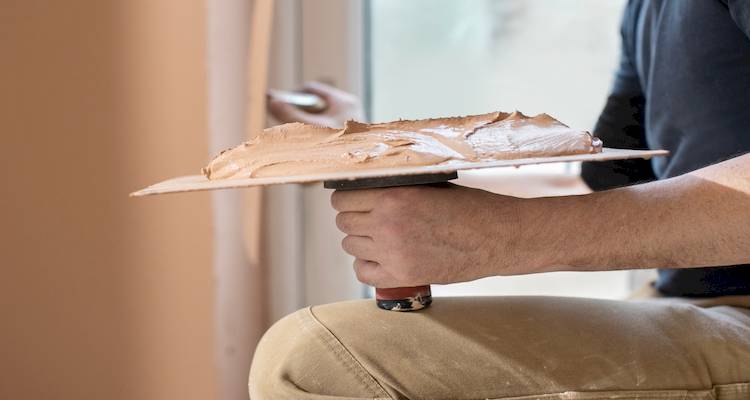
Another essential factor to consider is the type of rendering processes and equipment used, as these can significantly reduce or raise the total cost of the job.
The quality of the final process is also essential, whether you save money by doing it yourself or hire a qualified tradesperson and pay a little more for a more professional job. All of these are essential components that only you, as the homeowner, can make corrections to.
If you would like further information, please refer to our guide on the costs of rendering a house.
Labour Costs and Timescales
Assume you want to replace an old open window with a new uPVC casement window in a historic home. The window measures approximately 1500mm x 1150mm and must be custom-made due to its non-standard size.
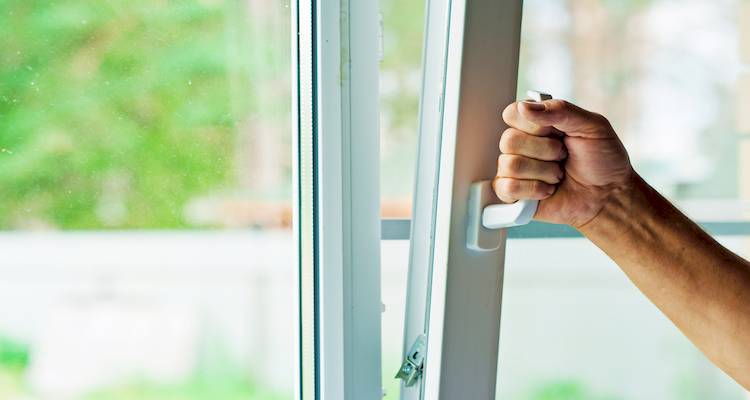
After the new window opening installation, the outside and inside must be repaired using age-appropriate methods. It will cost between £300 and £400 for two men to finish this in one day, plus materials.
Installation costs between £450 and £500, plus materials, if you want to replace it with a wholly painted softwood window. A fully treated but unpainted hardwood window will cost the same as a softwood window.
You want to replace an old open window with a new uPVC window. Assume you want to replace a Victorian sliding sash window on the ground floor with a new one. You can use the existing counterweights that have been appropriately adjusted to the weight of the new sashes.
It will cost around £700 and will take two days to install and make good inside and out. Materials are not included.
These times and prices are estimates and may differ from what is charged. A typical carpenter's or window fitter's rate, on the other hand, is around £150 to £175 per day, while a labourer charges around £100 per day. Don't forget to include VAT.
Cost Factors of Installing a New Open Window
So far, we've discussed the base price of windows and the labour costs associated with them, but a few other factors can affect the cost of replacement windows.
Purchasing vs Fitting
Purchasing windows and installing them are two distinct processes. In your calculations, you must include labour for installing the windows. For an additional fee, your supplier may also install windows.
Most of the time, you'll need to find a builder or other specialised window contractor to install the windows once you've purchased them.
Window Size and Openings
Window openings in older homes may not be standard sizes, or they may not be square and level, necessitating a custom solution. In addition, because it is not as simple as some fittings, your fitter may need to make more changes during installation, which may increase the cost.
Colour of the Frame
Colour selection is critical. Your costs will be lower if you are content with standard white UPVC. Woodgrain is more expensive, but it is the only way to achieve a natural look.
Numerous colour and wood colour options are available between plain old UPVC and woodgrain. Some of these will be pricier than others, with grey UPVC typically costing 10% more than white and wood grain effect UPVC costing 15% more than white.
Window Design
After you've determined how many windows you'll have and how big they'll be, you'll need to decide on their style. m Here are a few options, each with a different price tag:
- Simple glass
- Lead-based glass
- Bar glass from Georgia
- The casement windows
- The bay windows
- The bow windows
- The sash windows
You'll also need to decide how many openers you want and whether they need locks, which affects the overall cost.
Glazing Style
What will it be, double or triple glazing? The latter may be the best option in a freezing climate because it provides the most heat efficiency. However, double glazing will suffice for most standard properties.
Glass Types
Another option is the type of glass you use. This can be normal, toughened, or obscured, each of which provides different benefits depending on what you want for your home. The further you stray from the basic variations, the higher your overall fees.
Energy Conservation
Most new windows are extremely energy efficient and have excellent insulation levels. However, some are superior to others. Windows have energy-efficiency ratings ranging from A to A+++. The more features there are, the more expensive the windows are.
While they are more expensive up front, energy-efficient gains can save you a lot of money in the long run. This means lower heating costs – and, given that the average lifespan of a window is around 25 years, that's a significant saving.
Taking Out Old Windows
When considering your quote, ensure that your fitters or builders remove your old windows; otherwise, you may be charged more to dispose of them.
Scaffolding
Scaffolding may be required to reach the upper levels of your building, depending on its height. This will be added to the cost of your project and should be considered if you have a large, tall property because the scaffolding will need to be on-site for a few days to ensure the fitters remove and afterwards install your new windows.
Permits and Regulations in Planning
This includes the cost of applying for permission and any building regulations that may limit you to specific styles or colours, which may cost more. In any case, it's critical to know everything from the start so you don't get caught off guard in the middle of your project.
What's Involved in Installing a New Window Opening?
Adding a window to your home's exterior walls can make it feel brighter and more spacious. Working with exterior walls, on the other hand, requires extreme caution. If the installation is not done correctly, it may result in dampness and draughts. At worst, it could cause serious structural issues.
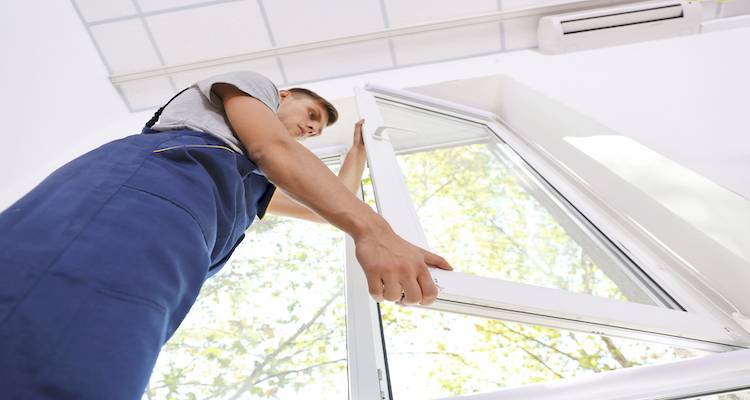
It is possible to do the job yourself if you are a skilled builder. However, it is not a job suitable for the average DIY enthusiast. We strongly advise you to call a professional to do the work to avoid potentially costly and time-consuming repairs.
Before you start
Determine the best spot for the window installation. In your mind, this may not be the "ideal" location. You should ensure that the area is free of water pipes and electrical wiring and located between the wall studs.
Determine the location of the studs using a stud finder. If you can't find a suitable location to install the window because there are too many wires and pipes, consult a professional before beginning work.
Getting the Area Ready
If your home has vinyl siding, carefully remove it. After you have finished installing the area, the siding will be reinstalled. Use the dimensions provided by the window manufacturer to mark the window's location on the exterior wall. Measure this and use a level to ensure that the window is aligned correctly.
Create A-Frame
Create a rectangular frame with two headers. At the top, there should be a pair of 2x6s that are wide enough to allow for window clearance. Wood glue and three-inch screws should be used to secure the joints.
Remove the Wall
Cut the wall with a reciprocating saw, ensuring the opening is no more significant than the frame. Next, remove the crown and baseboard while also cutting the sheetrock.
Set up the Frame
Screw the frame into the studs and the window frame. Make sure the window is level and use shims if necessary. Install screws and check the level regularly until the window is secure.
Replace the sheetrock and patch the wall once the window is in place. Then, install new siding, window trim, weather strips, and caulking.
Can I Install a New Window Opening Myself?
It may be advantageous to install new window openings yourself. Hiring an installer may appear to be an unnecessary expense if you're on a tight budget and have some DIY knowledge. However, installing window openings can be difficult, especially if you're adding a new style to your home.
It can take some time to install new window openings yourself. If you're installing several of them throughout your home, each can take up to 6 hours to fit, so plan time to fit your windows.
Installing new window openings yourself, on the other hand, can work if you are willing to take time out of your schedule. In addition, it can be a more comfortable fit if you replace a window like-for-like.
Because these installations are 'inserts,' you can keep the window's interior and exterior trim. That also means you won't have to replace the original window frame when installing your windows, which can be much more difficult.
However, fitting window openings yourself can be time-consuming. Often, you'll need to strategically move the window around in an opening that has altered and transitioned over time. As a result, fitting window openings yourself may be akin to fitting a square peg into a round hole.
A reputable installer will wrap the exterior window in coil stock that matches the window colour, ensuring a seamless fit. However, this necessitates specialised knowledge. When you install a new window opening on your own, you risk exposing yourself to various problems.
One of them could be your window opening's warranty. In some cases, the manufacturer will not cover the installation of your window. Therefore, if anything wrong happens when installing your windows, they will not cover the damage. Furthermore, fitting window openings yourself may void the manufacturer's warranty, so you should be cautious.
Furthermore, not all window openings will have the same setup process. For example, if you need to replace a wooden window opening, you may need to use shims to make a new one fit the frame.
While hiring an installer may cost more money, it can be worthwhile. You'll relieve some of your stress and won't have to worry about taking some time out of your day just to install a new window opening. You can also work with an installer to fit your windows around your schedule, thereby minimising disruption.
You can get a perfect fit while remaining calm and without causing too much disruption for you and your family.
Building Regulations & Planning Permission for Installing A New Window Opening
If you're remodelling your home, you might want to add a new window opening. However, you must first determine whether you need planning permission. Here, we look at when you might need to get planning approval to move or add a window to your house.
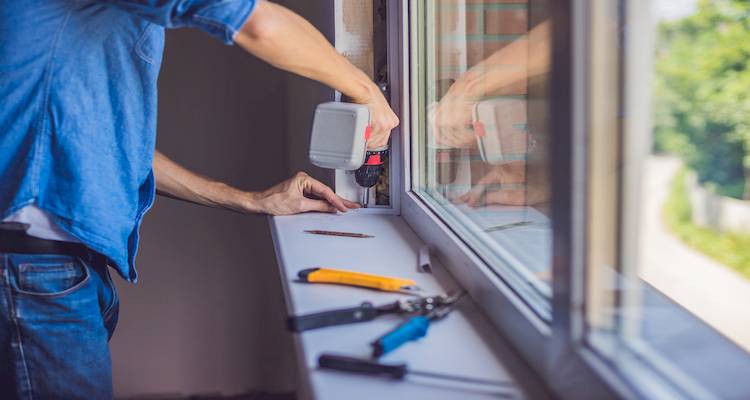
In most cases, replacing or adding windows to your home's original walls is possible without planning permission. This is since this is usually included in your PDR. In addition, inserting new window openings will not require planning permission if any windows on a top floor side elevation have obstructed glass glazing and are fitted into a non-opening frame.
Any rule has exceptions, and in some cases, you will need to gain planning permission to add a new window opening to your property. If your property's original permission came with conditions, you'd need approval. Contact your local government to find out if this is the case.
If you intend to add a new bay window to your home, keep in mind that you'll need to apply for planning permission because it will be considered an extension.
If you live in a listed building, you must obtain listed building consent before carrying out any major work on your home, whether external or internal.
This includes approval for the creation of a new window opening. Furthermore, if you live in a designated area, including a national park, conservation area, or AONB (Area of Outstanding Natural Beauty), you may encounter additional restrictions regarding having a new window opening created.
If you live in a rented property, you may not have to obtain planning permission from your local council for your new window openings, but you may need permission from your landlord.
If you're making changes to your home and need a new window, you'll need to choose the right type of window to suit your personal preferences and the character of your home. Keep the character of your neighbourhood in mind as well, so you can select a window style that looks in keeping with and complements the existing aesthetic of your home.
Types of New Window Openings
There are several factors to consider when selecting windows for replacement or new construction. Frame materials, glazing choices, and energy efficiency all are critical considerations. You should consider the basic functioning style of the windows, which each has its own set of advantages and disadvantages. Window style variations also exist, some of which are modifications or combinations of other styles.
This section will discuss the various types of new window openings and their benefits and drawbacks.
Windows with a Single Hinge
Single-hung windows open vertically, with the lower window panel or sash moving up and down and the upper sash keeping stationary. The top sash is covered from the inside when you open a window. The movement of these sections is the primary distinction between single and double-hung windows.
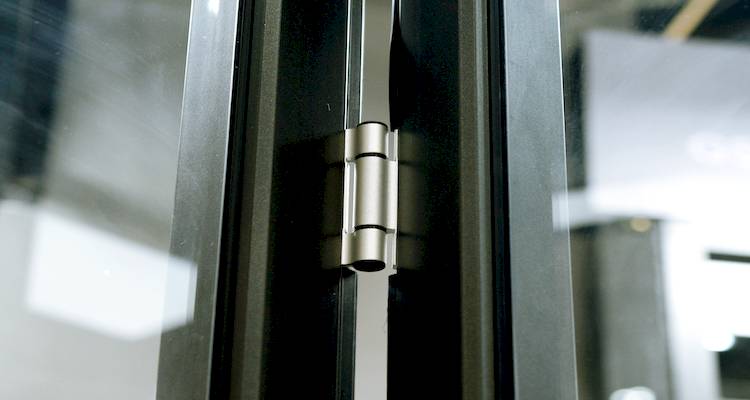
PROS
✔ Affordable
CONS
✖ Boring style
Windows with Awnings
Awning windows are ideal for rainy climates simply because of the way the window produces a water-resistant umbrella once opened. They swing open on the outside by pushing the latch or handle outward. This makes them weatherproof and easy to clean.
PROS
✔ Easy to clean
✔ Waterproof
CONS
✖ Expensive
Window Tilt and Turn
When tilt and turn windows were introduced in the 1980s, they quickly became famous for uPVC double glazing. The tilt and turn's main advantage is their ability to open in multiple directions and be safely left open on a tilt for ventilation.
Unlike casements, which open outwards, tilt, and turn windows open inwards and can be fully opened to allow cleaning of the external glass from inside a home. Ideal for upper-story windows.
Tilt and turn windows have an extremely tight seal when closed, making them one of the most energy-efficient frame options. However, tilt and turn windows have a thick frame and are less appropriate for period properties, where they may appear out of place. Tilt and turn works best for house construction after the 1960s and apartment buildings.
PROS
✔ Tight seal
✔ Ideal for upper-story seals
CONS
✖ Expensive
Sliding Or Slider Windows
Unlike a traditional sash window, a sliding window opens to the side, sliding horizontally. For example, consider a small patio door. Sliding windows are typically made with a slimmer aluminium frame that allows maximum glass area for a bright window.
It is ideal for use in the kitchen behind a sink, where they can be easily achieved and opened—also used to describe a kitchen window that opens onto a patio or terrace for serving. Large sliding doors and windows can help to open spaces to the outside. One window may be installed in the back kitchen in other traditional properties but not used as a complete set.
PROS
✔ Easily opened
✔ Traditional
CONS
✖ None
Pivot Windows
Pivoting windows have sashes that can rotate 90°-180° around a horizontal or vertical axis, usually located on or near the centre of the sash. A pivoting window allows for full ventilation but cannot be equipped with a filtering screen.
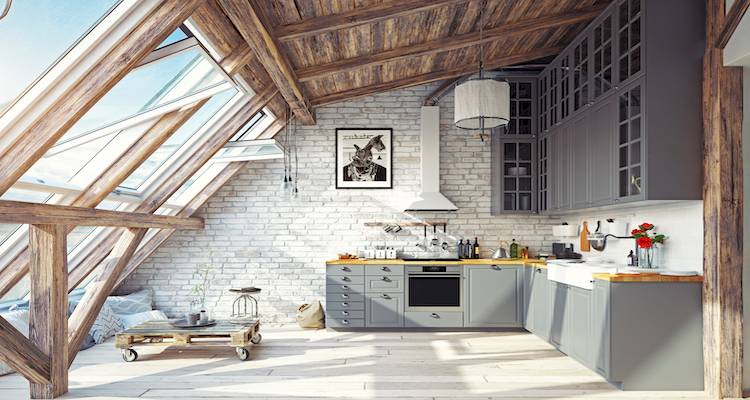
Because of the loss of control and protection in a fully pivoting panel, this window type is typically used only in exceptional situations requiring cleaning, upkeep, service, or emergency ventilation.
PROS
✔ Different types
✔ Gives protection
CONS
✖ Expensive
Inward and Outward Windows
One of the most important factors to consider when deciding between inward or outward opening windows is the location's climate. For example, in a hot, humid climate, flynets may be required on windows to prevent mosquitoes – in this case, inward-facing windows are best because flynets work best when installed outside the frame.
It's a highly subjective question about aesthetics, but many people agree that inward-facing windows are now more visually appealing. In addition, inward opening windows have the distinct aesthetic advantage of accommodating Juliet balconies, allowing for the arrangement of flower boxes and other items.
Finally, inward-facing windows benefit from being able to be cleaned from the inside. Meanwhile, outward-facing windows perform well in rainy weather because they do not allow as much rain to settle on their profiles.
PROS
✔ Aesthetically pleasing
✔ Unique looking
CONS
✖ None
Hiring Contractors for Installing a New Window Opening Checklist
A worded quote is one of the most important aspects of a home renovation job, second only to professionals. It ensures that you are protected if someone forgets about an agreement and can help you get out of sticky situations if necessary.
It's important to clarify whether the cost includes replacing both frames and sills, whether window furniture would be included, and whether the cost includes the disposal of old windows.
Asking these questions early on will prevent you from having awkward discussions part-way through a job, which can be costly additions if only considered at the end of the project.
Seeking references and previous project photos or videos is an excellent way to ensure that the contractor's work meets your expectations for your home.
Finally, requiring proof of insurance is an excellent way to weed out rogue traders who are unlikely to have any. Although it is inconvenient, it can save you money in the long run and prevent you from wasting time on a contractor who is nothing more than hot air.
FAQs
Do I need building regs for a new window opening?
Do I need planning permission for a new window opening?
Does it matter how a window opens?
What are tilt and turn windows good for?
Can you put another window in your home?
Sources
https://www.doubleglazingquoter.co.uk/can-you-install-new-windows-yourself/
https://www.windowsonlineuk.co.uk/blog/add-window-house/
https://www.evolutionwindows.com/blog/do-i-need-planning-permission-to-create-a-new-window-opening
https://www.everest.co.uk/double-glazing-windows/types-of-windows/
https://www.clearviewdoors.co.uk/news_articles/inward-vs-outward-opening-windows/





